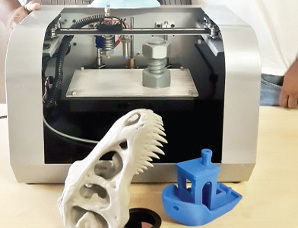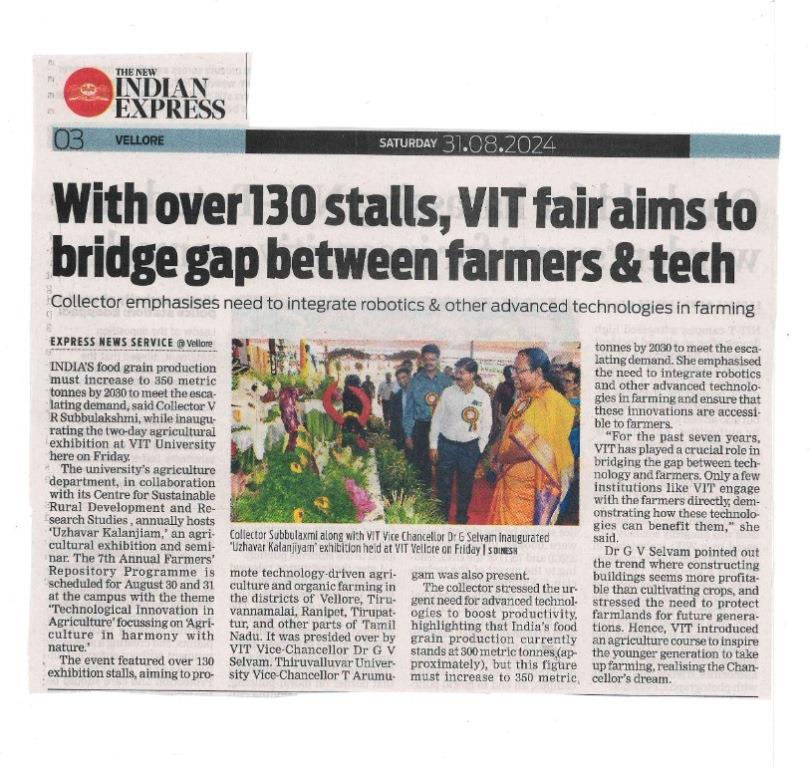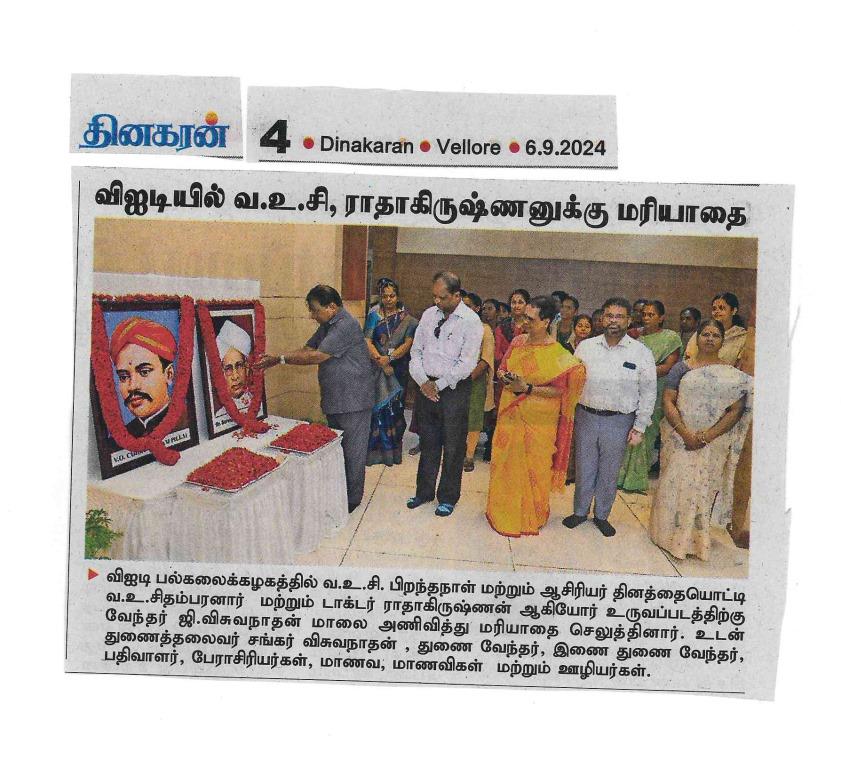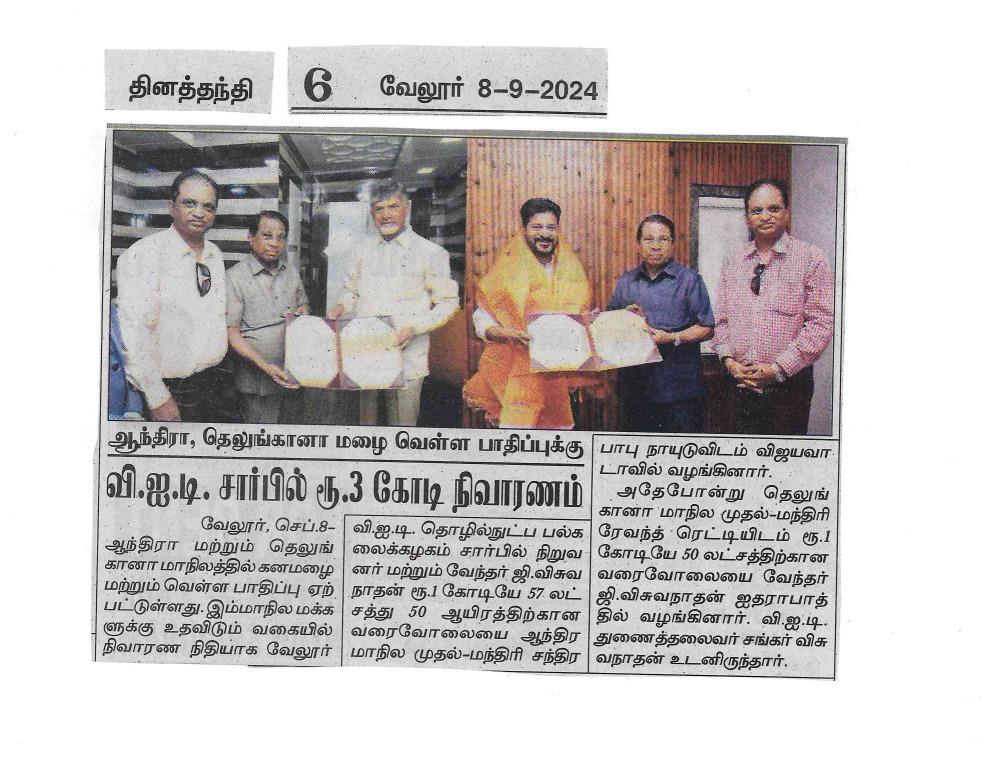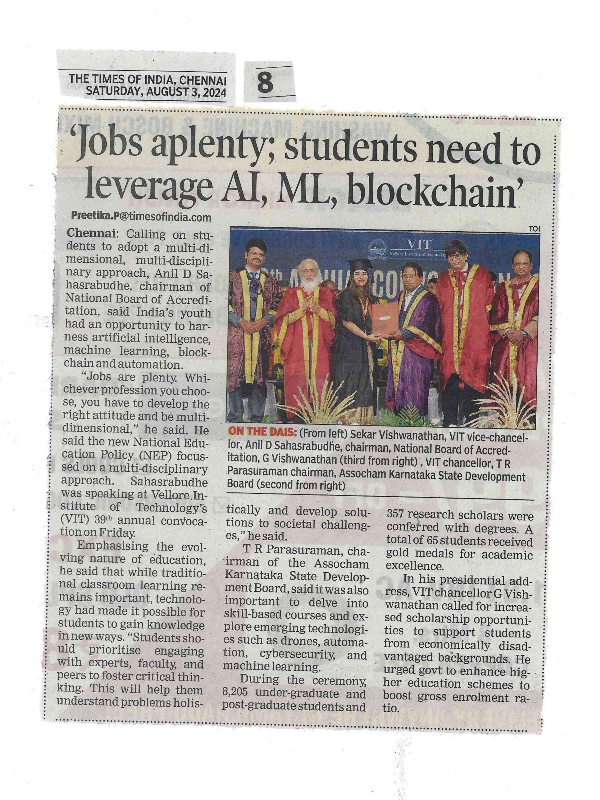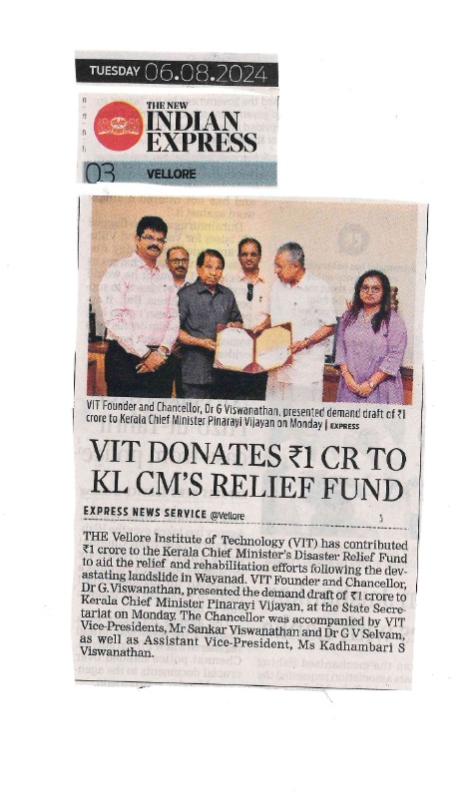- Home
- Archieved News
- VIT Alumnus Friend develop cost effective 3D printer
VIT Alumnus Friend develop cost effective 3D printer
An alumnus and his childhood friend have jointly developed a fully indigenised, low cost and first-of-its-kind, three-dimensional printer which was showcased at graVITas ‘15 ‘Knowledge Festival’ in VIT on Saturday. The desk-top version of the printer they have produced, they claim, is the lowest-priced printer that target industries and hobbyists.
M Premkumar (VIT Class of 2005 Mechanical Engineering) said that he along with his friend from school, Pingnagan Pranvam, an electronics engineer from Sriram Engineering College, Chennai, are credited with the innovation using ‘fixed filament fabrication’ and ‘digital liquid processing’ technologies fusing mechanical and electronics engineering techniques. It uses a new solidifier and extruder that can withstand heat and fluctuating power with all components having been developed by the two engineers.
“It took us more than three years to study market requirements, technological availability and other parameters before we could narrow down our innovation to four models of the printers,” recalled Premkumar. While most of the printers are imported, “we wanted to design something indigenous, technologically advanced and easy to handle to support the ‘Make in India’ mission,” he added.
The applications for this printer are enormous, he said, adding, “it will fit in the emerging fields of health-care, dentistry, food industry, sculpting , personal fabrication etc.”
The printer can generate real-life models using a computer assisted design (CAD) file and with inputs of up to 10 additional materials, such as plastics. Other models of the printer have an in-built mini computer that can use Wi-Fi to access data from any source. The team is working to include a camera so that users can print remotely. It takes about four to ten hours to develop a 3D model of 200 mm by 140 mm by 100 mm size. The desktop model - ICE (Ideate, Create and Exhibit) is a low-cost one geared for students to learn the art of 3D modelling. “The first model was a big flop but we fine-tuned it for nearly two years,” both recalled. “We wanted to keep the cost lower than the mobile phones, especially when students can convince parents to gift them mobile phones,” said Pingnagan.


